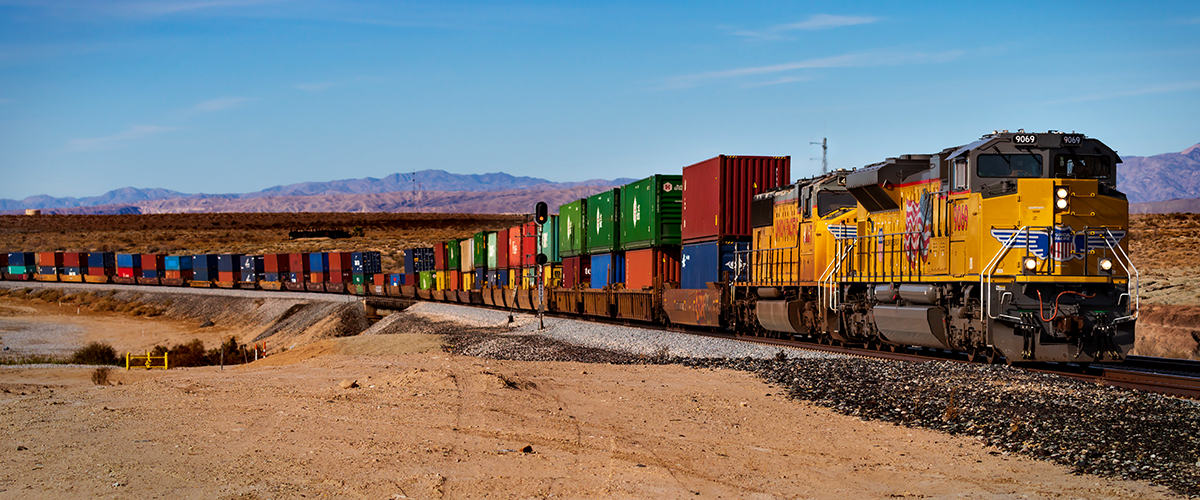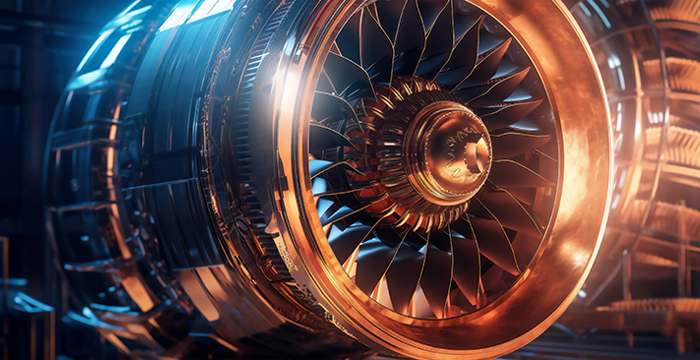Chugging Along
Jason Spilkin April 2024

It’s no exaggeration that the humble railway line enabled settlement in the western United States, which has few navigable rivers and is surrounded by deserts and mountain ranges. In the early 1800s, most of the population lived along the east coast near existing ports and infrastructure. Back then, crossing from the Atlantic to Pacific coast took many weeks by wagon. The advent of railways reduced the transit time to days, and at one tenth of the cost, made mining, manufacturing, and farming feasible “into the great wide open”.
Railway capacity expanded at breakneck pace. In 1860, rail transport carried less than half as much freight as inland waterways. By 1890, however, rail carried five times as much, buoyed by the completion of transcontinental lines. Much of this was speculatively financed with debt at a time when demand seemed endless. After demand growth moderated, a series of bankruptcies followed. The aftermath was a series of consolidations, led by the so-called railway “Robber Barons”.
Railways are what economists call “natural monopolies”, where the upfront capital costs are so high that it does not make economic sense to have more than one competing line. By the early 1900s, in response to monopolistic practices by the barons, congress passed antitrust legislation (the Sherman Act) and created a rail regulator, the Interstate Commerce Commission (ICC) to set maximum rail tariffs.
Economists have proven that price caps, set at artificially low levels, have unintended consequences. When goods are (artificially) cheap, the result is excess demand, shortages and rationing. By way of example, the British often complain that it is nigh impossible to get a “free” NHS appointment, though equivalent private care is a phone call away if one is prepared to pay a market price for the service. With the benefit of hindsight, the result of ICC price caps seems predictable, though to be fair back then Congress did not have the benefit of Keynes and his cohorts. As a result of the price caps, one sixth of the railway capacity in the United States had been bankrupted by 1915 and by 1937 that ratio had increased to just under one third.
Through the mid-20th century, the invention of trucks and airplanes steadily eroded freight market share of regulated rail. Trucks offered more flexibility and were cheaper over shorter distances. Airplanes were quicker over long haul where speed mattered more than cost. Barges were cheaper over long distances but slower and only available where there were waterways. These competing modes were all unregulated. Railways rotted under the raft of regulations, culminating in 1970 with the bankruptcy of Penn Central, which was the largest in US history.
In that aftermath, Congress began enacting legislation (Staggers Act in 1980) to deregulate, allowing carriers to negotiate their own tariffs and boost productivity, by consolidating and discontinuing unprofitable routes. In 1995, the ICC was eliminated entirely, and its remaining powers were handed over to the STB (Surface Transportation Board) with a different raison d'etre: its mandate is more mediator, to resolve tariff disputes, if (and only if) they arise. To the extent there aren’t disputes, the STB is quite content to let railways generate attractive returns on capital, which encourage investment, rather than impeding it.
Deregulation has been a success for railways, their customers, and the public at large. Today, the US has amongst the safest and most efficient freight rail systems in the world. They are owned, operated, and maintained by the private sector – not financed by the taxpayer. Average rail freight tariffs are 40% lower today (adjusted for inflation) than in 1980 when Congress started deregulating.
Consolidation over the past 40 years whittled the number of “Class 1” railways in North America down to just six competitors. These are long-haul, transcontinental lines, shipping commodities, industrial products, and containers from the coasts to and from the heartland. Typically, there is a duopoly structure, with no more than two Class 1 railways focused in any area of the US. For example, only Union Pacific and Burlington Northern Sante Fe operate in the western part of the United States. There are also 22 regional and 580 local short-line railways.
Class 1 railways are irreplaceable assets with an impenetrable competitive moat. It would make no economic sense to build any new transcontinental lines to compete: the capital costs would simply be too high. Existing operators also benefit from barriers such as long-term freight contracts and exclusive access to ports. In our view, the only plausible risk to their moats come from a change in regulation, which would require an act of Congress and is not even on the political agenda.
Capacity growth will be incremental, from Class1 railways densifying their existing networks, by “bolting on” regional and local lines, building loops (to allow overtaking), double stacking containers, adding longer, faster trains, and so forth.
More robust environmental regulations in future should be a boon for rail compared to trucking. It comes down to physics and the concept of “resistance” which is higher where the rubber meets the road and lower for metal wheels on metal track. As a result, trucking has higher “fuel burn” versus rail, using four times the amount of diesel (per ton mile). Rail seems well positioned to take more than its fair share if the green lobby gets their way.
We have been invested in Union Pacific (UNP) since 2015, taking advantage of a temporary dip in sentiment to purchase the stock for a below market rating – a rare opportunity. This year, we bought Canadian National Rail (CNR) due to temporarily depressed earnings related to port strikes last year – an infrequent occurrence. Both are well managed and highly profitable. They benefit from superior volume growth due to less exposure to coal and more to growing trade with Asia and within “NAFTA” (North American Free Trade Agreement, which includes Mexico, USA, Canada). Consistently, they’ve grown pricing above inflation, likely due to longer average hauls and fewer competing modes in the western hemisphere. Profit margins have improved over time through greater fuel efficiency of locomotives and labour productivity. We expect these trends to continue. Strong cash conversion and robust balance sheets provide plenty of capital to grow capacity and profitably, whilst any excess cash has been returned to investors through dividends and share buybacks.
Longer term, we believe both UNP and CNR offer above market earnings growth and dividend yields, yet they trade near a market multiple. Mr Buffet once opined that “If you aren't thinking about owning a stock for ten years, don't even think about owning it for ten minutes”. If you are of that mindset then these two pearls have a place in your portfolio.
This communication does not constitute an investment advertisement, investment advice or an offer to transact business. The information and opinions expressed in this communication have been compiled from sources believed to be reliable. None of Credo, its directors, officers or employees accepts liability for any loss arising from the use hereof or reliance hereon or for any act or omission by any such person or makes any representations as to its accuracy and completeness. Any opinions, forecasts or estimates herein constitute a judgement as at the date of this communication. Credo Capital Limited is a company registered in England and Wales, Company No: 03681529, whose registered office is 8-12 York Gate, 100 Marylebone Road, London, NW1 5DX. Authorised and regulated by the Financial Conduct Authority (FRN:192204). © 2025. Credo Capital Limited. All rights reserved.




